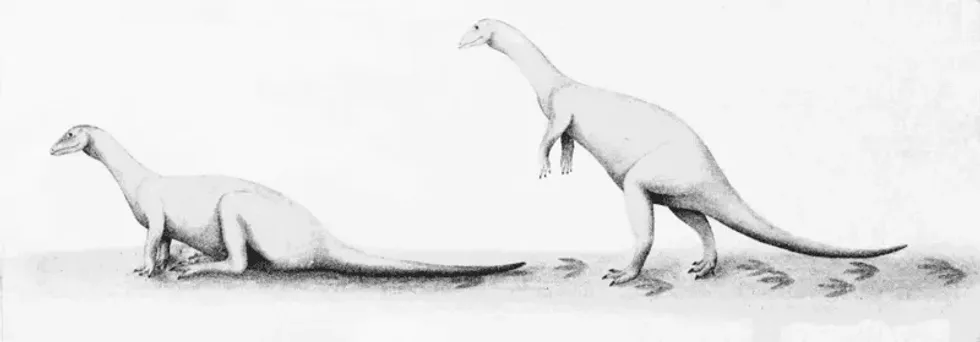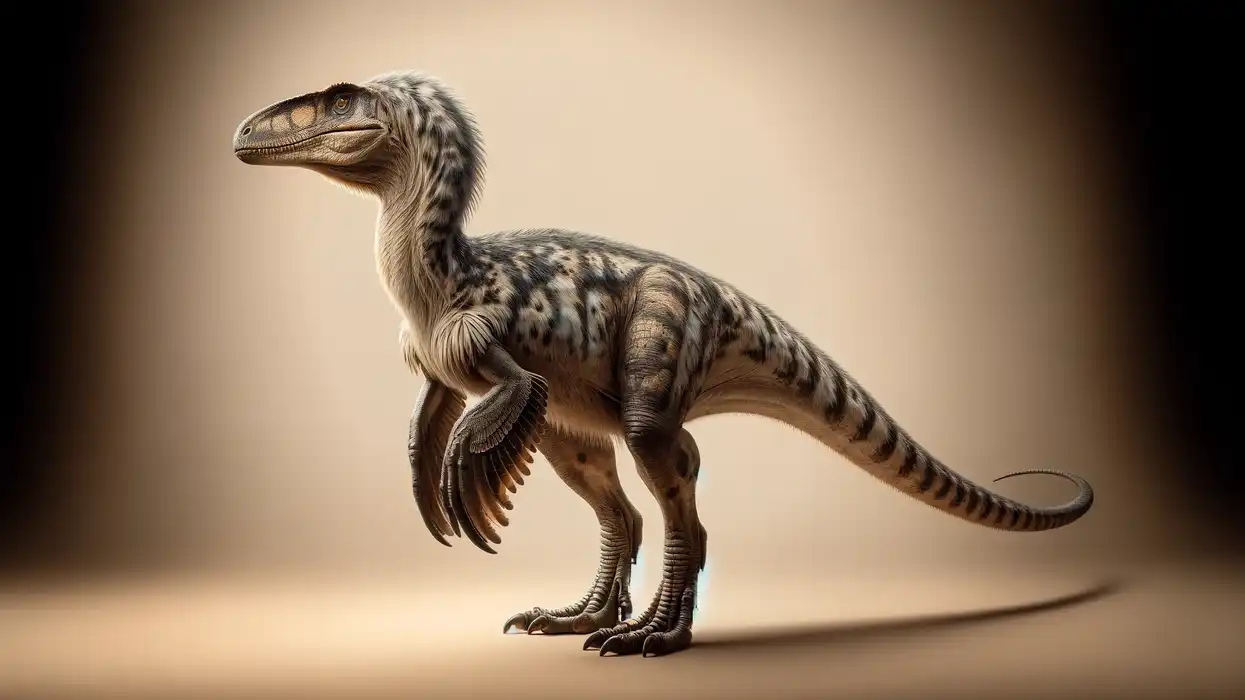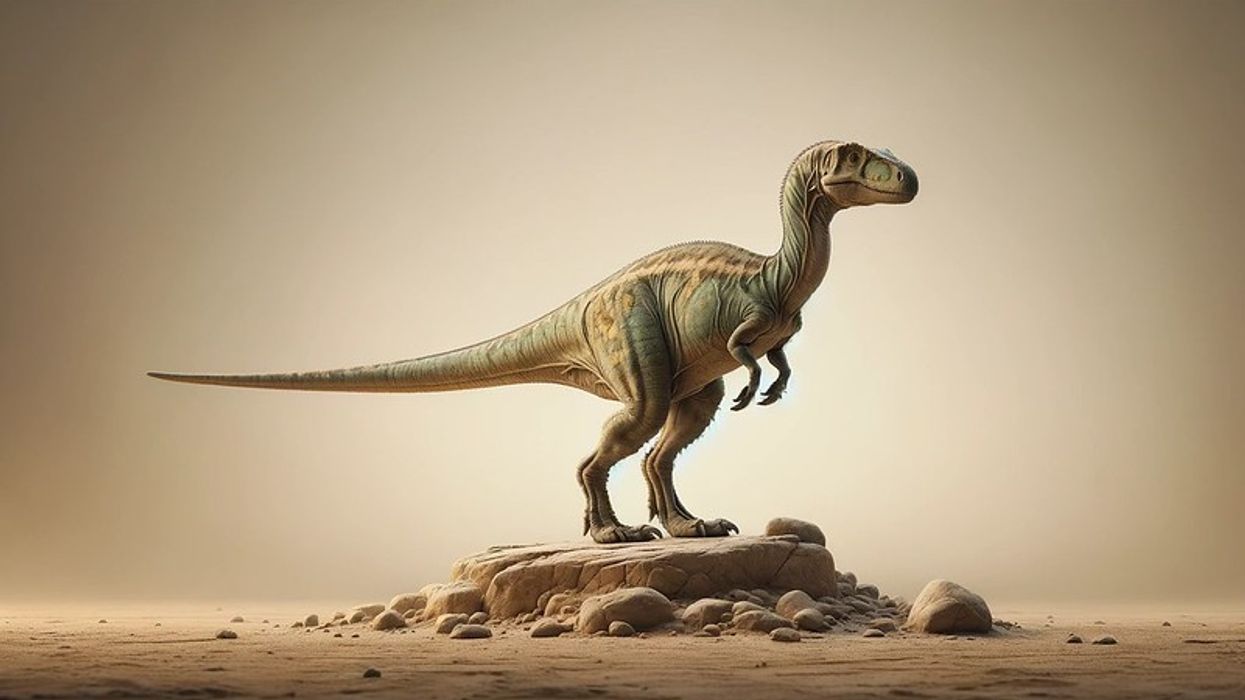Sergei Mikhailovich Kurzanov, a Russian paleontologist, discovered the fossils of this bird-like dinosaur in the summer of 1987 during a joint Soviet-Mongolian expedition. The Avimimus dinosaurs were small theropods that are believed to have had bird-like characteristics and behaviors.
Paleontologists believe that these dinosaur species were the most intelligent ones of their kind. Living in the late Cretaceous period, these theropod dinosaurs walked on two slender legs like birds and looked like a large reptilian roadrunner.
The proportions of the leg bones further added to the assumption that the Avimimus was quick on its feet. The Avimimus dinosaur had a long, lean neck topped by a short skull that was equipped with a toothless beak.
Although having a small skull, it had a large brain. Their large brain attributed to them being quite intelligent.
It is possible that Avimimus had feathers. They were lightly built and equipped with sharp, curved claws.
The bones in its wrists were actually fused, much like that of the modern-day cockatoo.
In fact, Avimimus had the ability to fold its whole arm against its body, much like the wings of a bird. However, these dinosaur species were believed to have a very short tail that was not fully developed and some believe that they had no tail at all!
These dinosaurs preferred terrestrial habitats. They were found to inhibit the wet and marshy forests of China, Mongolia, and parts of Canada.
Having an omnivorous diet, the Avimimus dinosaur fed on insects, small animals like squirrels and rabbits, small birds like finches and sparrows, and plant matter too. Kurzanov himself, however, believed that Avimimus was an insectivore.
Very little is known about their breeding habits but the 'Lekking behavior', where individuals group to display to potential mates, was believed to occur among the male and female dinosaurs of this species. Evidence from footprints and bonebeds too suggests that these dinosaurs were gregarious and lived in groups.
If you'd like to discover more fun facts on dinosaurs, check out our Xixianykus fun facts for kids or Borogovia interesting facts!
Avimimus Interesting Facts
How do you pronounce 'Avimimus'?
Avimimus is pronounced as 'Ayv-ee-mime-us'.
What type of dinosaur was an Avimimus?
These dinosaur species, which were believed to have no tails, are small theropods that shared the same characteristics as birds.
In which geological period did the Avimimus roam the earth?
The Avimimus was known to roam around the earth during the Cretaceous geological period.
When did the Avimimus become extinct?
Most modern scientists agree that Avimimus belongs to a group of dinosaurs that disappeared during the late Cretaceous extinction about 66 million years ago and had characteristics similar to birds but more primitive than Archaeopteryx, the oviraptorosaurs (oviraptorosaurians).
Where did an Avimimus live?
The Avimimus was found to live in wetlands and marshy forests.
What was an Avimimus' habitat?
The exact details on where these small theropod species lived are not known in depth. However, the habitat of the Avimimus dinosaur, being an omnivore, was in wet forests in regions like Mongolia, China, other parts of Asia, and Canada.
Who did an Avimimus live with?
These species of dinosaurs that looked like modern birds were suspected to live in groups or flocks, often foraging for food together. They were also believed to engage in lekking behavior around the breeding periods.
How long did an Avimimus live?
These dinosaurs, which had no tail, lived on the earth and roamed around for about 165 million years. The exact lifespan of the Avimimus is unknown.
How did they reproduce?
Fossil records have not provided much on the reproductive and breeding patterns of this theropod species but paleontologists and scientists have made some findings. Like all dinosaurs, the Avimimus species.
Dinosaurs made eggs the same way reptiles and birds do today. Females produced them inside their bodies. Some dinosaurs laid as many as 21 eggs in a single nest.
The eggs of these dinosaurs must have come in many shapes and sizes from cannonballs to giant footballs. These theropod species did not nurture their offspring as mammals typically do, and because dinosaurs did not nurse, most dinosaurs were likely capable of surviving on their own after hatching.
Avimimus Fun Facts
What did an Avimimus look like?
 We've been unable to source an image of Avimimus and have used an image of a skeleton of Brontosaurus instead. If you are able to provide us with a royalty-free image of Avimimus, we would be happy to credit you. Please contact us at hello@kidadl.com.
We've been unable to source an image of Avimimus and have used an image of a skeleton of Brontosaurus instead. If you are able to provide us with a royalty-free image of Avimimus, we would be happy to credit you. Please contact us at hello@kidadl.com.
The skull of the Avimimus was quite small compared to the body although the brain was large. Avimimus is a small, frail, theropod dinosaur who lived in Asia's Mongolian regions during the Late Cretaceous Period.
It had a strange appearance but the Avimimus skeleton had a unique structure. It is incompletely known but many of its anatomical features are more advanced, in a bird-like sense than those of Archaeopteryx.
Like in modern birds the hand bones were fused, and the presence of pronounced quill knobs on the lower arm bones confirms that Avimimus did at least have feathers on this part of its body. The Avimimus skull is said to be quite small although they had a large brain as well as large eyes.
Having long and slender legs enabled them to run quite fast. Many studies have stated that these bird-like dinosaurs did not have a tail.
How many bones did an Avimimus have?
The total number of bones that these small theropods had is not known to date but paleontologists and dinosaur enthusiasts are trying to find out.
How did they communicate?
Since these dinosaurs take after birds, they would have taken after them in terms of communicating with each other as well. Vocal abilities and body language would have probably been used by them to communicate with one another.
How big was an Avimimus?
In general, all dinosaur species were super big but the Avimimus size was known to be about 2-3 ft (0.6-0.9 m), which is quite small for a dinosaur
How fast could an Avimimus move?
These small theropods were quite fast and agile. They were as fast as an ostrich, running at a speed of approximately 43 mph (69.2 kph)!
How much did an Avimimus weigh?
The Avimimus dinosaurs weighed about 45 lb (20.4 kg), the same as an adult elephant's heart!
What were the male and female names of the species?
There are no sex-specific male or female names for this dinosaur species.
What would you call a baby Avimimus?
You'd be very surprised to learn that baby theropods are called chicks! This could probably be because of their bird-like nature. They are often also referred to as nestlings or hatchlings.
What did they eat?
Paleontologists believe that these dinosaur species were largely insectivores while another group of scientists claims that they were herbivores. However, from evidence, the Avimimus diet was quite omnivorous, with them feeding on insects, lizards, rabbits, squirrels, mice, and other small animals along with plants and vegetation.
How aggressive were they?
The Avimimus fossil records do not mention whether these dinosaur species were aggressive or not but like all dinosaurs, they would have been violent to a certain degree.
Did you know...
Paleontologists have discovered about seven species of this dinosaur! The Avimimus name means 'bird mimic'. The large brain of this theropod also made it more intelligent among other dinosaurs.
Could the Avimimus fly?
Although paleontologists believed to have feathers from its skeletal structure, these species of theropod were considered to be flightless. Only the fact that they had leg bones contributed to them being fast runners but not good fliers.
How did the Avimimus defend itself?
These dinosaurs would have used long legs to their best advantage, especially in dangerous situations to defend themselves.
Here at Kidadl, we have carefully created lots of interesting family-friendly dinosaur facts for everyone to discover! Learn more about some other creatures from our Chirostenotes interesting facts, or Lurdusaurus facts for kids.
You can even occupy yourself at home by coloring in one of our free printable Avimimus coloring pages.
*We've been unable to source an image of Avimimus and have used a sketch of a herbivorous dinosaur instead. If you are able to provide us with a royalty-free image of Avimimus, we would be happy to credit you. Please contact us at hello@kidadl.com.










